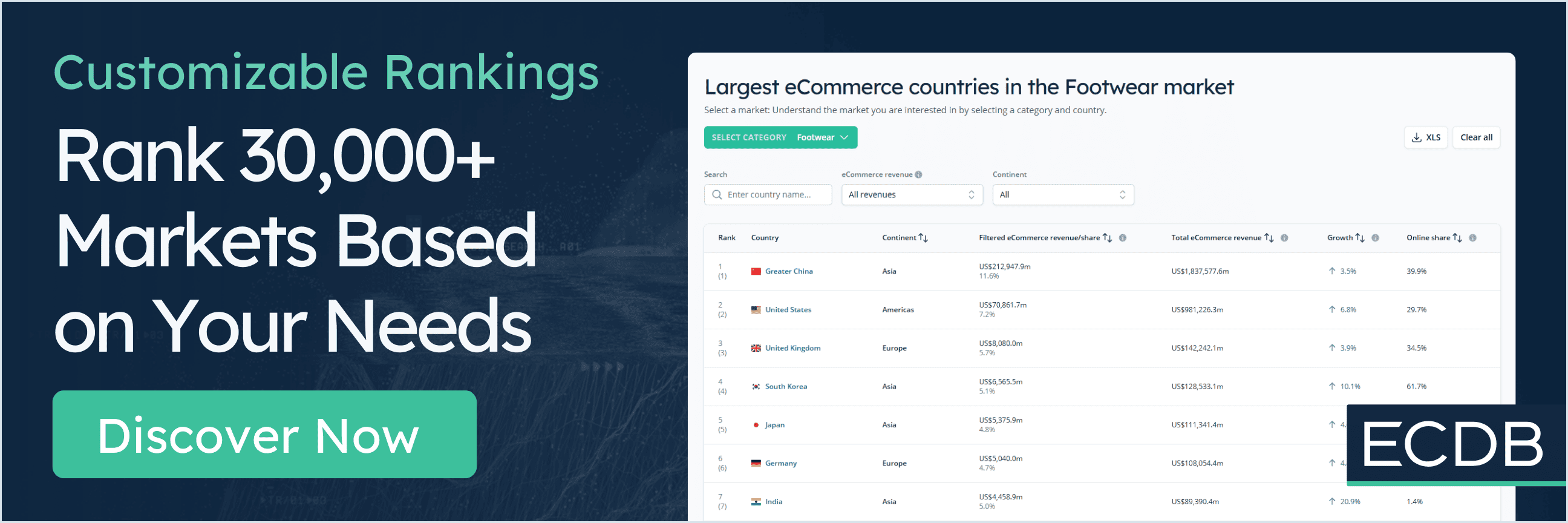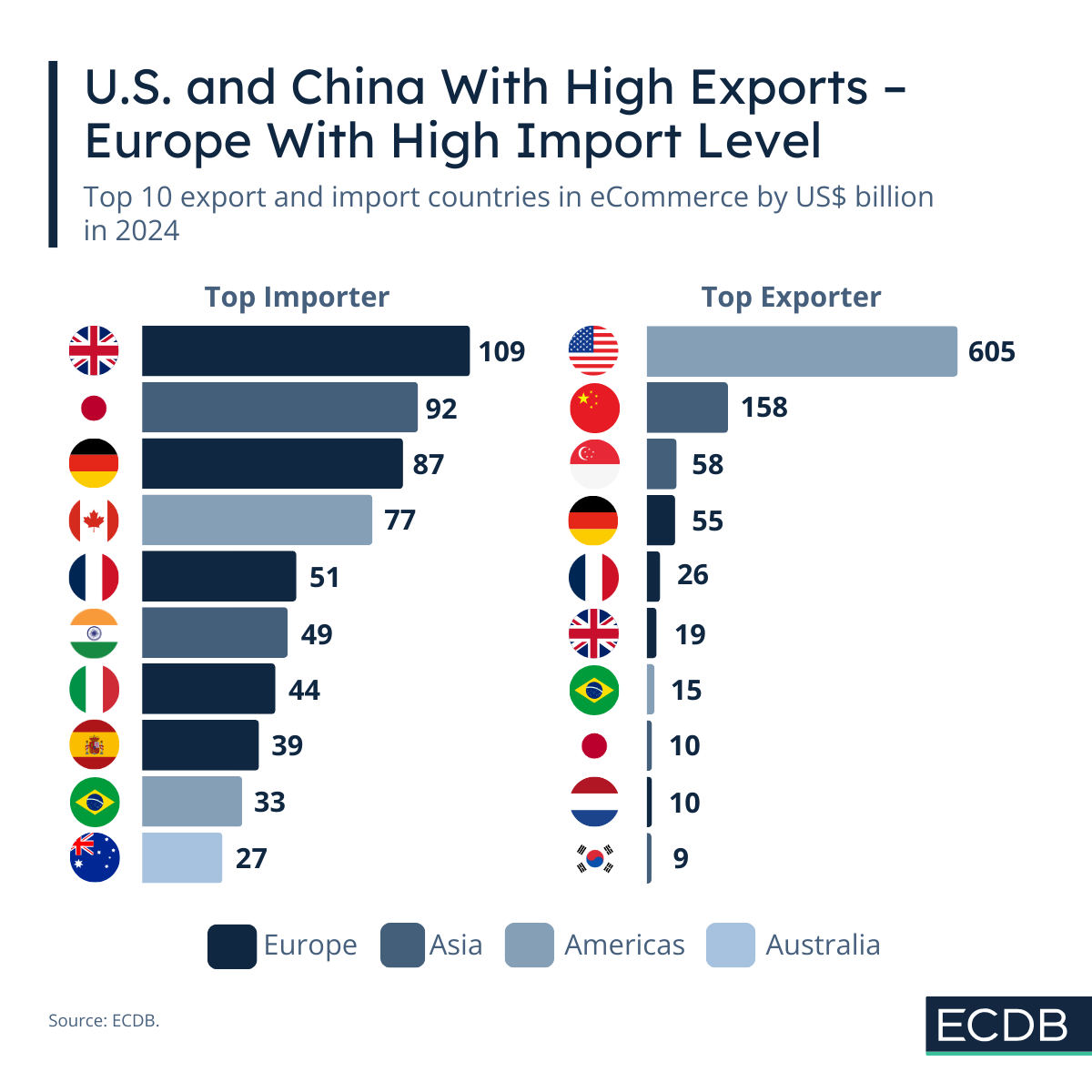Matcha from Japan, wine from France and coffee from Colombia – cross-border eCommerce connects global consumers with the best the world has to offer. Some countries import more than they export, while others do the opposite. The United States, in particular, sticks out with a conspicuously high level of cross-border eCommerce merchandise exports.
The United States Stands Out with US$605 Billion in Export
The world's largest exporter last year was the United States, with cross-border eCommerce revenues of US$605 billion. The country benefits greatly from large online stores such as amazon.com, walmart.com and apple.com. But eCommerce players such as Temu and shein.com also contributed to this figure, as they also have their main market in the United States.
What Does Cross-Border eCommerce Mean?
Cross-border eCommerce refers to online net sales generated outside a company's main market. For example, Amazon's main market for its U.S. store, amazon.com, is the United States, making it the store's home country. Similarly, for Amazon's German store, amazon.de, the main market is Germany, which is considered its home country.
China follows in second place with US$158 billion. This high figure could be explained by high efficiency, cost structure and global demand of Chinese companies, such as Alibaba Group Holding, Ltd. or JD.com, Inc. They produce a lot and that for a low price, making them attractive for markets outside of China.
Singapore also seems to be benefiting from a large demand for goods from the rather small city-state. The country ranks third with exports worth US$58 billion. Companies like Shopee Singapore Pte., Ltd. and Qoo10 Pte., Ltd. are big drivers behind this figure. In addition, the country's size allows for rapid eCommerce development, resulting in Singapore's relatively high online share of 15.2% – higher than Finland's 15.1%.
High Export Values, Higher Import Values
The top three exporting countries in cross-border eCommerce are followed by five countries that rank quite high in the top 10 importing countries. Germany arrives at a total export volume of US$55 billion, while importing US$87 billion in 2024.
The United Kingdom, Japan, Germany, France, and Brazil all have a high eCommerce import value compared to their export value. Generally speaking, this trend is more pronounced in European countries. The reasons for this vary, however, one of them being the development of platforms such as Amazon, Temu or AliExpress. With low prices and a variety of products, they attract customers from all over the world, putting local retailers to the test.
Overall, European countries are strong importers and exporters, partly because they trade a lot with each other, benefiting from each other's developed eCommerce markets and digital infrastructure. On the other hand, the U.S. is a top exporter thanks to the presence of many important eCommerce companies. Finally, Asian countries export a lot as a result of low labor costs and competitive prices.










